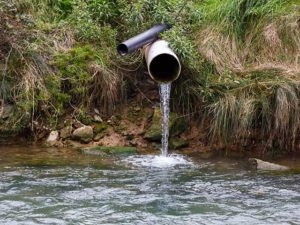September 15, 2025
EPA Proposal Would Reduce States’ Role in Longstanding Partnership for Water Quality Protection
The Clean Water Act is built on a balance between federal, state, and tribal authorities, but Trump’s EPA wants to disregard the law, limiting the ability of states and tribes to protect their water resources
By Nancy Stoner, Senior Attorney
America was built on a system of checks and balances. The idea behind the system of cooperative federalism between federal, state, and tribal authorities is that democracy is stronger when we’re all in this together. But the Trump administration wants to throw all that out the window, particularly when it comes to protecting clean water. I testified to EPA last month about EPA’s new move to drastically reduce Section 401 authority under the Clean Water Act. Here are some highlights from my comments on what that means for undercutting states’ rights and water quality in the Midwest.
How do States & Tribes Protect Clean Water?
Before the Clean Water Act was passed in 1972, Congress had extensive debate on the roles that federal, state, and tribal governments could play in the protection of waterways. Ultimately, the law reflected a careful balance of each. Before a project that involves discharges into waterways can get a federal permit, states and tribes have to sign off on it. Local communities know their waterways, and sometimes local officials can catch problems that federal authorities may miss, so this system has provided an important backstop for fixing bad projects and protecting clean water.
Local officials can catch problems that federal authorities may miss
Sometimes the law can be confusing, but in this case, things are quite clear. Section 101 establishes Congress’ clear intent for cooperative federalism, protecting “the primary responsibilities and rights of states to prevent, reduce, and eliminate pollution.” Section 401 articulates the preeminent role of states in protecting water quality when threatened by activities that require a federal permit. And the Supreme Court has recognized this role multiple times! In a 1986 case, the Supreme Court explained that Section 401 certifications are “essential in the scheme to preserve state authority to address the broad range of pollution.” S.D. Warren Co. v. Maine Bd. of Env’t Protection, 547 U.S. 370, 386 (1986)
Upending Fifty Years of Cooperation
This May, the Trump EPA put out a new memorandum that threatens this role of states and tribes in Clean Water Act oversight. As part of Administrator Zeldin’s broader effort to implement “the most significant deregulatory action in U.S. history” the new memo limited the authority of states and tribes to condition or deny federal permits, particularly aimed at fossil fuel energy projects that the Trump administration prioritizes.
The EPA also tried to do this a few years ago under the first Trump Administration. At that time, nineteen states and DC challenged that rule alleging that it “upends fifty years of cooperative federalism by arbitrarily re-writing EPA existing water quality certification regulations to unlawfully curtail state authority under the Clean Water Act.”
The 2023 rule that replaced the 2020 rule was consistent with the statute and with the Supreme Court’s interpretation of it. To the extent that some certification decisions are not closely hewing to the rule, they already can be challenged by the applicant. So, there is no problem with the current rule that needs to be solved.
What does this mean for our waterways?

Congress passed the Clean Water Act in 1972 to protect waterways across the US from pollution. While not perfect by any means, it has been a huge success. Rivers that were once on fire or were filled with dead fish, sewage, and industrial waste are now a huge source of economic and recreational activity and provide clean, safe, reliable resources for drinking, for growing food, for wildlife, and much more. Why would we ever go back?
Every tool removed from the clean water toolbox makes it that much harder to fight water pollution. States have been a key partner of EPA in protecting their rivers, lakes, and coastal waters. Clean, safe water supports public health, recreation, and a strong economy. EPA needs to work with states to protect our nation’s waterways, not undermine them.


